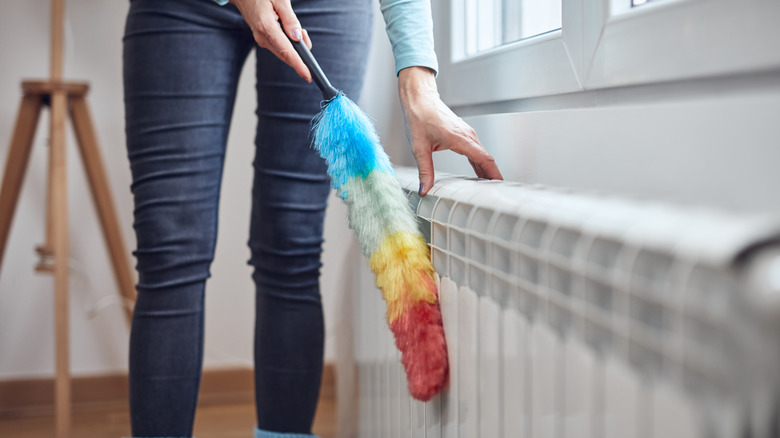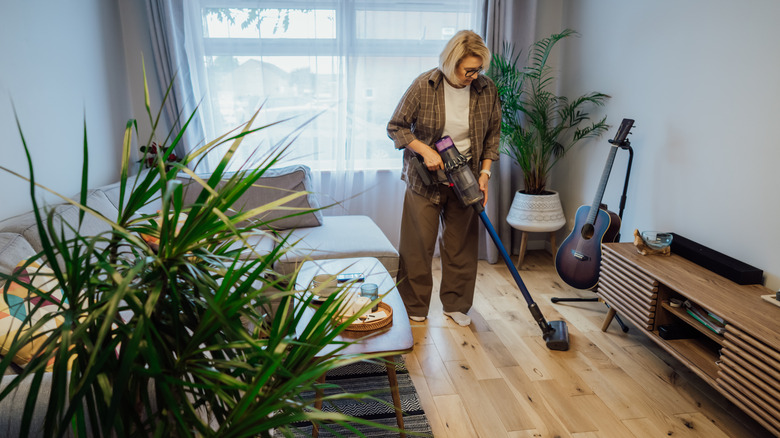The Final Step To Take After Dusting That Everyone Always Forgets (It's Much More Effective)
Dusting is one of those household chores that most of us don't think too much about. You grab a duster or microfiber cloth, and wipe all the surfaces in your home that tend to collect the dirt, dead skin cells, pet dander, hair, pollen, and dust mite droppings that make up dust. It certainly seems easy, but there are actually proper steps for effective dusting, and one of the dusting mistakes you may have been making this whole time is skipping a key final step: vacuuming.
While there's some debate over whether you should dust or vacuum first, professional cleaners agree that vacuuming after dusting is the most efficient and effective way to clean your home. That's because dusting usually sends the fine particles that make up dust flying through the air. They often take a few minutes to land, but most will land on the floor. If you don't finish your dusting routine by vacuuming, all that dust will remain on the floor, where it can get kicked back up onto the surfaces you've already cleaned. It can also lead to poor indoor air quality, which is particularly concerning if you or a family member have allergies, asthma, or other respiratory issues.
Here's the right way to dust
The first rule of dusting is to work from the top of your room down. That means starting with higher surfaces, such as light fixtures, ceiling fans, or the tops of furniture, to keep dust particles from falling onto already cleaned surfaces. You'll clean more efficiently because you won't have to dust surfaces multiple times.
Choosing the right dusting tools for your home is essential for effective cleaning. Microfiber cleaning cloths work especially well because their split fibers capture and hold onto dust and other debris. A feather duster or other long-handled duster is also helpful for high areas and other hard-to-reach spots. Proper technique matters, too. Wipe surfaces and items gently to prevent dust from flying through the air. It also helps to use a downward motion that pushes the loose dust onto the floor rather than onto other surfaces around the room.
To avoid missing any dust, remove all the items from your furniture before you start cleaning. Dust the furniture, then each item individually, before returning the objects to the surface. It may seem like an extra step, but you'll actually save time if you don't have to lift all the items to dust underneath them.
Once all the above-floor surfaces are dusted, finish by vacuuming the entire room. High-quality dusting tools should capture most of the dust, but your vacuum will remove any that the microfiber duster misses, leaving your room truly clean.

